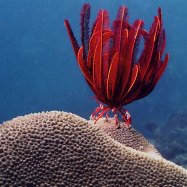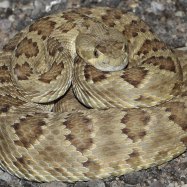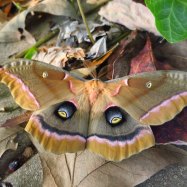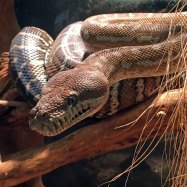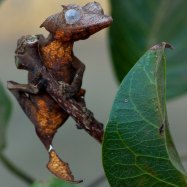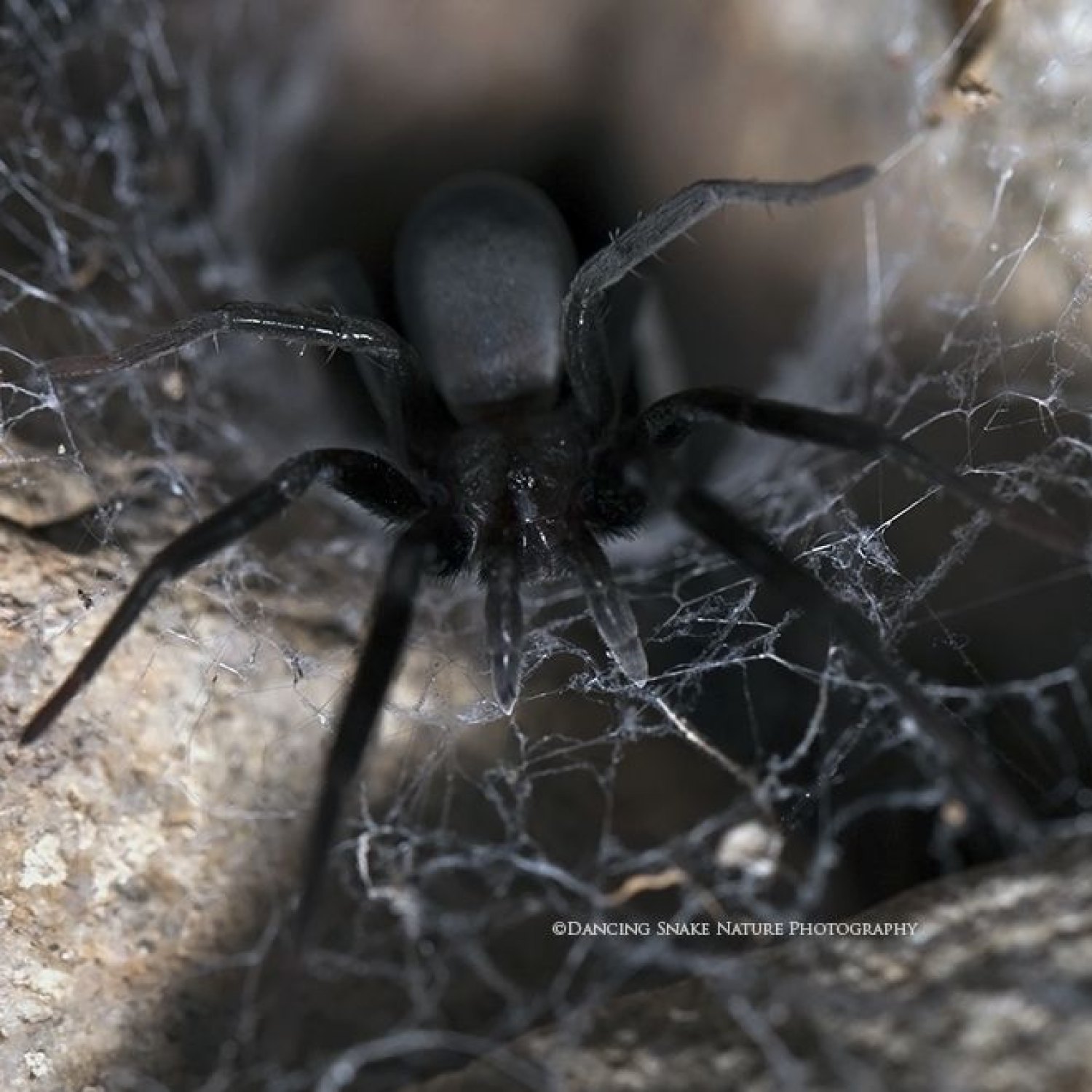
Southern House Spider
0.5 to 0.75 inches (1.3 to 1.9 cm)
Meet the Southern House Spider, a small and compact arachnid that can be found in the Southern United States. With a length of only 0.5 to 0.75 inches, these spiders may appear small but they are not to be underestimated. Belonging to the Filistatidae family, these spiders are known for their unique web-building abilities. Keep an eye out for these critters in and around your home!
Animal Details Summary:
Common Name: Southern House Spider
Kingdom: Animalia
Habitat: Indoor and outdoor spaces
The Mysterious Southern House Spider: A Close Encounter with Kukulcania hibernalis
In many cultures, spiders are often associated with fear and creepiness. However, one particular species, the Southern House Spider, also known as Kukulcania hibernalis, is a fascinating animal that deserves our attention and admiration.This small, compact spider belongs to the family Filistatidae within the class of Arachnida, which includes other arachnids such as scorpions and ticks. It can be found in both indoor and outdoor spaces, making it a common species in the Southern United States and parts of Mexico Southern House Spider.
Let's take a closer look at this intriguing creature and discover why it's more than just a creepy-crawly.
The Natural Habitat of Kukulcania hibernalis
Unlike most spiders that spin webs to catch their prey, Southern House Spiders are active hunters. They prefer to live in dark and secluded areas, making it difficult for us to spot them. This might explain why many people are unaware of their existence.Their preferred habitat includes garages, sheds, basements, and other undisturbed areas in and around houses. These spiders are also commonly found in caves, under rocks, and in tree bark.
Interestingly, despite living indoors and outdoors, these spiders do not adapt well to extreme temperatures. They prefer moderate temperatures and can even die if exposed to extreme heat or cold for extended periods.
Feeding Behavior of Southern House Spiders
Like all spiders, Kukulcania hibernalis is a carnivore and feeds on a variety of insects including flies, ants, and beetles Snook Fish. They do not use webs to capture their prey; instead, they actively hunt and ambush their victims.Their hunting technique is quite fascinating. These spiders have the ability to sense vibrations in the air, which allows them to detect potential prey. Once they sense movement, they quickly spring into action, capturing their prey with their powerful front legs.
Additionally, Southern House Spiders are nocturnal creatures, meaning they are most active during the night. They hunt in the darkness and retreat to their hiding spots during the day, making them difficult to observe.
Geographical Distribution and Country of Origin
As the name suggests, the Southern House Spider is mainly found in the southern region of the United States, but it can also be found in Mexico. It is believed that this spider originated in the United States and has slowly spread to other neighboring countries.Interestingly, while this species is found in the Southern United States, it has also been spotted in some northern states like Illinois and Michigan. However, these sightings are considered rare, and it's believed that the spiders were possibly transported through human activities such as shipping and trade.
The Unique Features of Kukulcania hibernalis
The Southern House Spider is a fascinating creature, not only because of its hunting technique but also because of its distinct physical characteristics.This spider is typically dark brown or black in color, making it blend in perfectly with its surroundings. This allows it to stay hidden and avoid detection from predators. Additionally, their small and compact bodies, which range from 0.5 to 0.75 inches in length, make it easier for them to move and hunt in tight spaces.
One unique feature of this species is its eight eyes, arranged in two rows of four. This gives them a better field of vision than most spiders, allowing them to detect movements and potential threats from all angles.
The Biters and the Bitten: Are Southern House Spiders Harmful?
As with any animal, there is often a fear of being bitten by a Southern House Spider. After all, it's a spider, and many people believe that all spiders are dangerous.However, the truth is, Southern House Spiders are harmless to humans. They are often shy and will retreat or play dead when threatened, and their venom is too weak to cause any significant harm.
In fact, these spiders are beneficial to have around. They help control the insect populations in and around our homes, which can help prevent potential diseases and damage.
The Role of Southern House Spiders in the Ecosystem
Aside from controlling insect populations, these spiders also play a vital role in the ecosystem. They are part of a complex food chain, with other animals, such as birds and lizards, feeding on them.Additionally, in their natural habitats, they play a crucial role in keeping the population of other spider species in check. This is because they are fierce predators and will not hesitate to eat other spiders they come across.
Myths and Misconceptions about the Southern House Spider
Despite their benefits and harmless nature, Southern House Spiders are still surrounded by misconceptions and myths. One common myth is that they are venomous and can cause severe harm to humans.As mentioned, these spiders are harmless to humans and do not pose any threat. Another common myth is that they are aggressive and will attack humans. The truth is, they are shy and would rather flee than engage in any confrontation.
It's important to understand and educate ourselves about these creatures to dispel these myths and appreciate them for the essential role they play in the ecosystem.
Final Thoughts
The Southern House Spider, or Kukulcania hibernalis, is a fascinating creature that deserves more recognition and appreciation. Despite their often misunderstood nature, they are beneficial to have around and play a vital role in the ecosystem.So the next time you come across a Southern House Spider, don't be quick to squish it or run away in fear. Take a moment to observe and appreciate the intricate details of this mysterious arachnid, and you might just develop a newfound admiration for these spiders.

Southern House Spider
Animal Details Southern House Spider - Scientific Name: Kukulcania hibernalis
- Category: Animals S
- Scientific Name: Kukulcania hibernalis
- Common Name: Southern House Spider
- Kingdom: Animalia
- Phylum: Arthropoda
- Class: Arachnida
- Order: Araneae
- Family: Filistatidae
- Habitat: Indoor and outdoor spaces
- Feeding Method: Carnivorous
- Geographical Distribution: United States, Mexico
- Country of Origin: United States
- Location: Southern United States
- Animal Coloration: Dark brown or black
- Body Shape: Small and compact
- Length: 0.5 to 0.75 inches (1.3 to 1.9 cm)
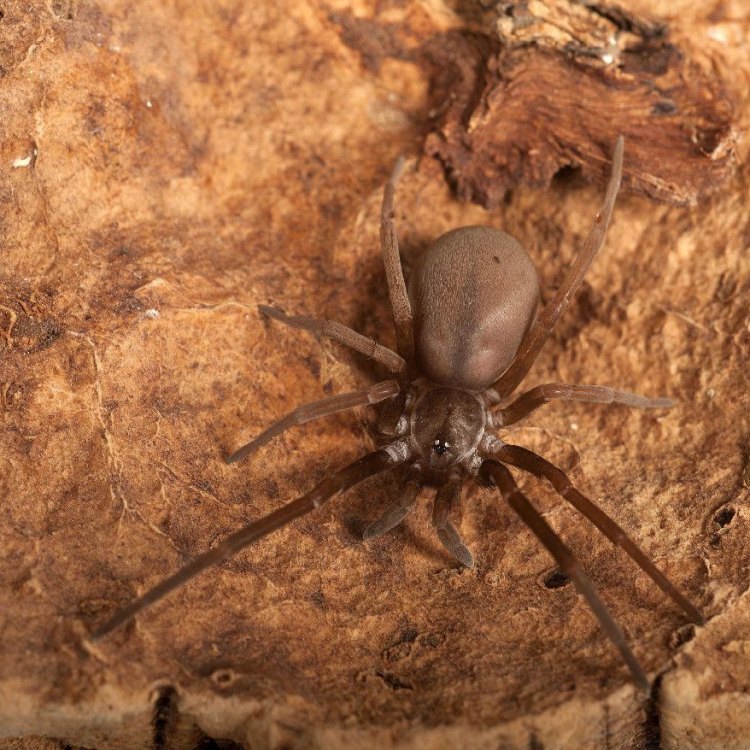
Southern House Spider
- Adult Size: 0.5 to 0.75 inches (1.3 to 1.9 cm)
- Average Lifespan: 1 to 2 years
- Reproduction: Sexual
- Reproductive Behavior: Males perform courtship rituals
- Sound or Call: None
- Migration Pattern: Non-migratory
- Social Groups: Solitary
- Behavior: Nocturnal, builds tangled webs in dark corners
- Threats: Predation, habitat destruction
- Conservation Status: Not listed
- Impact on Ecosystem: Keeps populations of insects in check
- Human Use: None
- Distinctive Features: Long legs, small body
- Interesting Facts: Females may cannibalize males after mating
- Predator: Birds, reptiles, larger spiders
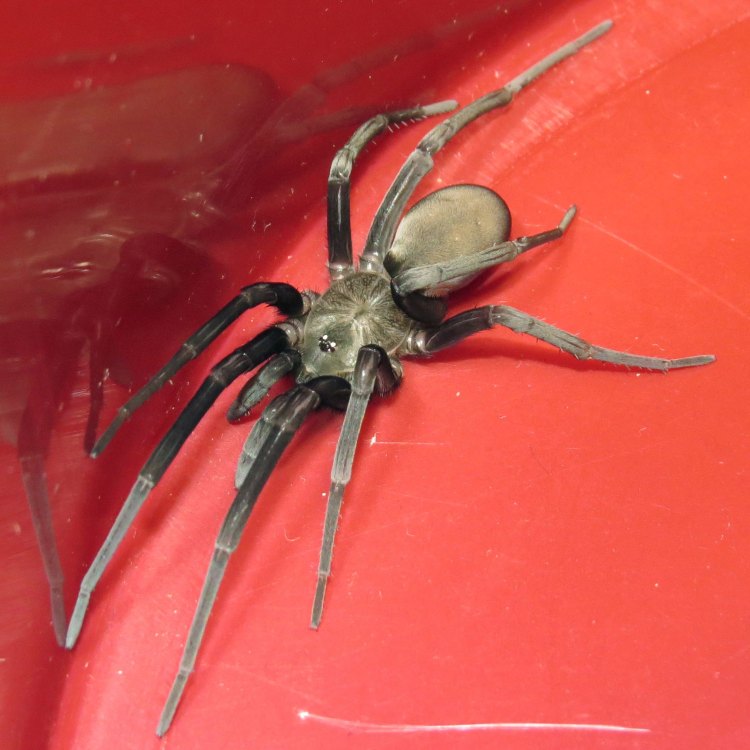
Kukulcania hibernalis
Discovering the Fascinating Southern House Spider
When we think of spiders, most of us imagine a creepy eight-legged creature that sends shivers down our spines. However, not all spiders are created equal, and some may even surprise you with their unique features and behaviors. One such spider is the Southern House Spider (Kukulcania hibernalis), also known as the Southeastern House Spider or the Southern House Funnel Weaver.This species of spider may not be as well-known as some of its more notorious relatives, like the black widow or the brown recluse, but it certainly has its own set of intriguing characteristics that make it stand out PeaceOfAnimals.Com. From its small size to its reproductive behavior, let's dive into the world of the Southern House Spider and discover what makes it truly fascinating.
A Tiny but Mighty Spider
The Southern House Spider may not be the largest spider you will come across, but don't let its size fool you. With its adult size ranging from 0.5 to 0.75 inches (1.3 to 1.9 cm), this spider can pack a punch. It is dark brown to gray in color and has a small, oval-shaped body with long, spindly legs. Its distinctive feature is the pairing of its long legs with a relatively small body, giving it a unique and somewhat comical appearance Sumatran Tiger.A Relatively Long Lifespan
Unlike other spiders that have a short lifespan, the Southern House Spider can live for up to two years. However, on average, they live for about one to two years. This longer lifespan allows them to reproduce multiple times and continue contributing to their ecosystem's balance.Reproductive Behavior
As with most spiders, the Southern House Spider reproduces sexually. The males perform courtship rituals to attract females, which usually takes place in autumn or spring. During this ritual, the male will tap the female's web to alert her of his presence and then make his way towards her. If the female accepts the male's advances, they will mate, but it's not over yet.Cannibalism in the Spider World
One of the most interesting facts about the Southern House Spider is its reproductive behavior. While most of us are familiar with the concept of cannibalism in the animal kingdom, it may come as a surprise that some female spiders practice this behavior after mating. Yes, you read that right. The female Southern House Spider is known to cannibalize the male after mating, and it's perfectly normal in their world.However, this doesn't happen all the time, and it's not a given that the male will meet his untimely demise after mating. Sometimes the males manage to escape unscathed, but it's not a risk they are unaware of. In fact, researchers have found that mating induces a stress hormone in male spiders, making them more vigilant and cautious about their surroundings, including the female.
The Sounds of Silence
While some animals communicate through sounds or calls, the Southern House Spider is not one of them. This species of spider is known to be silent, and thus, does not produce any sounds or calls. Instead, they use their sense of touch to communicate with potential mates or to detect prey.Non-Migratory and Solitary Species
Unlike other species of spiders that migrate to different locations, the Southern House Spider is non-migratory. This means that they do not move from their original location and build their webs in the same spot. They are also solitary creatures, preferring to live and hunt alone, without forming social groups with other spiders.Nocturnal Creatures
The Southern House Spider is a nocturnal creature, meaning they are most active at night. They spend their days hiding in dark, quiet corners and come out at night to hunt for their prey. This behavior is unique, as most spiders are diurnal, meaning they are active during the day.The Art of Web-Building
One of the most impressive features of the Southern House Spider is its web-building skills. They construct tangled webs in dark corners, which helps them catch their prey. Their webs have a funnel shape, where the spider resides at the narrow tip, waiting for any unsuspecting insect to become trapped in the web's sticky strands.The design of their webs is well-suited to their nocturnal behavior. Unlike other spiders that rely on visual cues to locate their prey, the Southern House Spider uses vibrations and movements to detect any insects caught in its web.
A Kept Balance in the Ecosystem
Although spiders may not be the most popular creatures, they play an essential role in our ecosystem. The Southern House Spider is no exception. They primarily feed on insects, thus keeping the populations of insects in check in their habitats. This makes them an important part of their ecosystem, as they contribute to maintaining a balance in nature.Threats and Conservation
Being small creatures, the Southern House Spider faces threats from predators such as birds, reptiles, and larger spiders. They also face habitat destruction due to human activities, resulting in a decrease in their population. However, they are not considered a threatened or endangered species and are not listed in any conservation programs.Going Beyond Spider Fear
Despite their small size and lack of harmful venom, the Southern House Spider is still feared and misunderstood by many. This fear often leads to unnecessary killing and eradication of these beneficial creatures. However, it is essential to understand that spiders play a significant role in keeping the insect populations in check and maintaining balance in our ecosystem.Being aware of their unique features and behaviors can help us appreciate these creatures and their contribution to the world around us. So, next time you come across a Southern House Spider, instead of fear, try to admire it for its fascinating characteristics.
The Not-So-Spooky Spider
In conclusion, the Southern House Spider may not be the most well-known or popular spider, but it certainly has its own set of distinctive features and behaviors that make it stand out. From its small size to its nocturnal habits, and even its cannibalistic tendencies, there's more to this spider than meets the eye.So, the next time you spot a Southern House Spider in your home, instead of reaching for a shoe, take a moment to appreciate this tiny yet mighty creature and all that it contributes to our ecosystem. It may just change your perception of spiders forever.

The Mysterious Southern House Spider: A Close Encounter with Kukulcania hibernalis
Disclaimer: The content provided is for informational purposes only. We cannot guarantee the accuracy of the information on this page 100%. All information provided here may change without prior notice.





